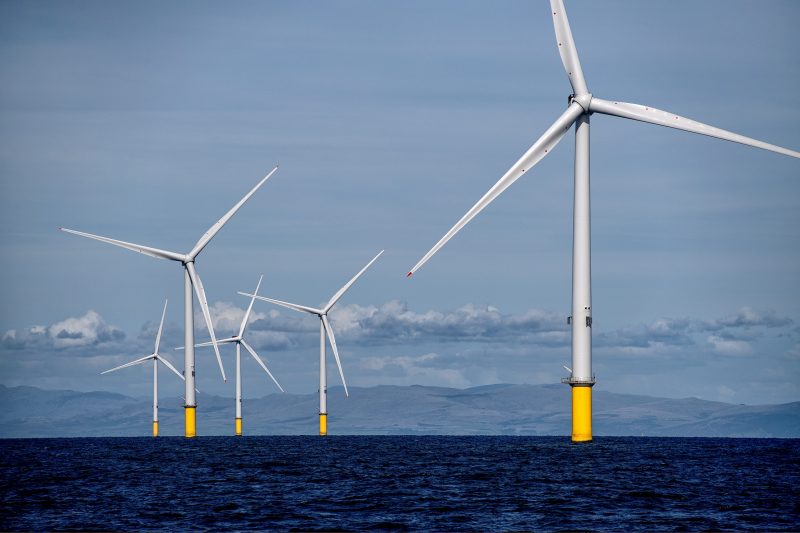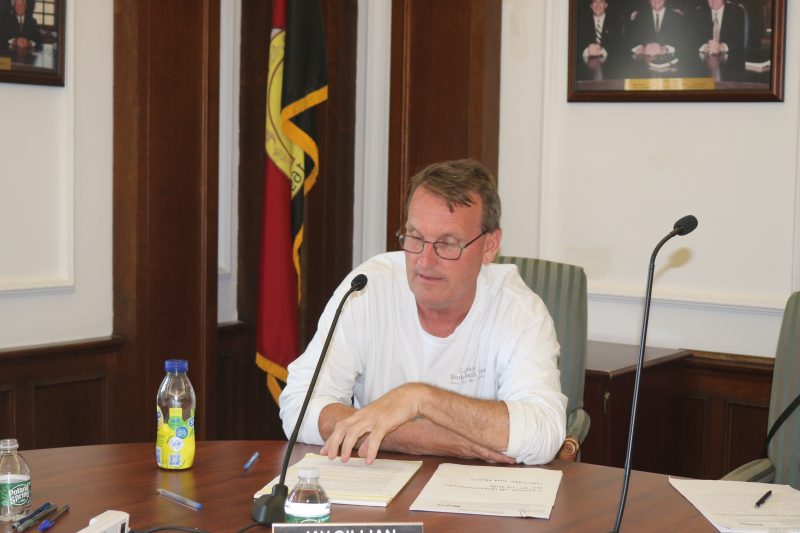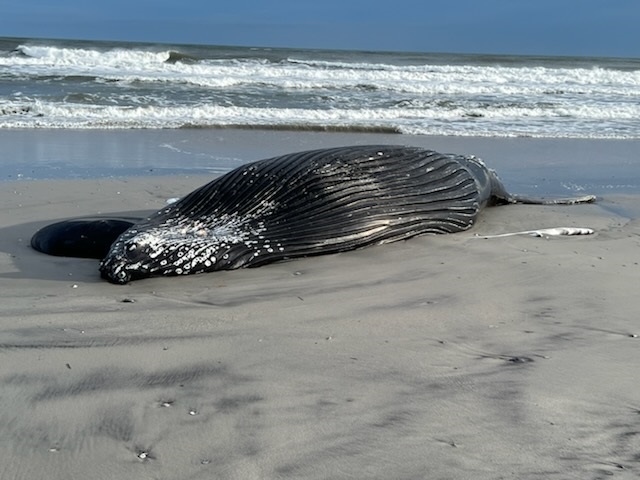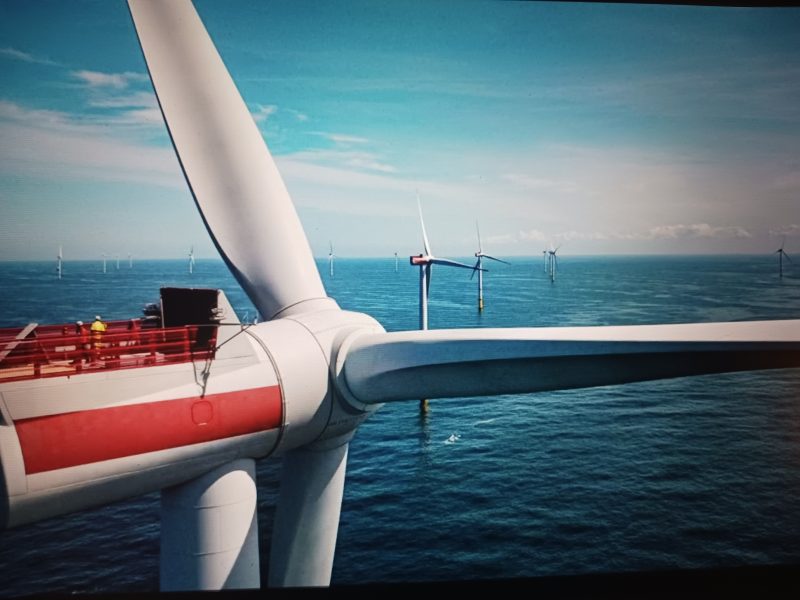City Council President Pete Madden and Vice President Karen Bergman retain their leadership posts for the second straight year.
 By DONALD WITTKOWSKI
Only a day after the federal government approved the project, Ocean City Mayor Jay Gillian wasted no time blasting plans for New Jersey’s first offshore wind energy farm and all but labeled the speedy regulatory review process a sham.
“The review process for this project moved so fast that it has proved to be an exercise in checking boxes,” Gillian said in a highly critical statement that he read during a City Council meeting Thursday night.
Gillian launched a wholesale attack on what he asserted will possibly be far-reaching negative financial, economic and environmental impacts caused by the wind farm once it begins operating 15 miles off the South Jersey coast – passing by Ocean City and other shore communities in the process.
“Despite the thousands of pages of paper masquerading as a complete review of the project’s impact, we still have absolutely no idea what this will cost all of the state’s taxpayers and ratepayers, and what benefits we might see in return. One thing is certain – everyone’s electric rates are going up. That much we’ve been assured of by the developer and our state,” he said.
“More importantly, we have no idea what impact this project will have on our ecosystems and environment, our economy and our health,” he continued.
Gillian’s comments followed an announcement Wednesday by the wind farm’s developer, the Danish energy company Orsted, that it has received approval for the project from the U.S. Department of the Interior’s Bureau of Ocean Energy Management.
With this milestone, the Ocean Wind 1 project, as it is called, remains on track to begin onshore construction activities in the fall of 2023, with offshore construction ramping up in 2024. Ocean Wind 1 is expected to begin commercial operations in New Jersey in 2025, according to an Orsted press release.
Ocean Wind 1 is a 1,100-megawatt project planned approximately 15 miles off the coast from Atlantic City to Stone Harbor. The project will generate enough electricity to provide 500,000 homes with renewable green energy, Orsted said.
By DONALD WITTKOWSKI
Only a day after the federal government approved the project, Ocean City Mayor Jay Gillian wasted no time blasting plans for New Jersey’s first offshore wind energy farm and all but labeled the speedy regulatory review process a sham.
“The review process for this project moved so fast that it has proved to be an exercise in checking boxes,” Gillian said in a highly critical statement that he read during a City Council meeting Thursday night.
Gillian launched a wholesale attack on what he asserted will possibly be far-reaching negative financial, economic and environmental impacts caused by the wind farm once it begins operating 15 miles off the South Jersey coast – passing by Ocean City and other shore communities in the process.
“Despite the thousands of pages of paper masquerading as a complete review of the project’s impact, we still have absolutely no idea what this will cost all of the state’s taxpayers and ratepayers, and what benefits we might see in return. One thing is certain – everyone’s electric rates are going up. That much we’ve been assured of by the developer and our state,” he said.
“More importantly, we have no idea what impact this project will have on our ecosystems and environment, our economy and our health,” he continued.
Gillian’s comments followed an announcement Wednesday by the wind farm’s developer, the Danish energy company Orsted, that it has received approval for the project from the U.S. Department of the Interior’s Bureau of Ocean Energy Management.
With this milestone, the Ocean Wind 1 project, as it is called, remains on track to begin onshore construction activities in the fall of 2023, with offshore construction ramping up in 2024. Ocean Wind 1 is expected to begin commercial operations in New Jersey in 2025, according to an Orsted press release.
Ocean Wind 1 is a 1,100-megawatt project planned approximately 15 miles off the coast from Atlantic City to Stone Harbor. The project will generate enough electricity to provide 500,000 homes with renewable green energy, Orsted said.
 Mayor Jay Gillian reads a statement criticizing the wind farm and the speedy regulatory approval process.
Gov. Phil Murphy, a strong supporter of the Orsted project, wants New Jersey to become a national leader in wind farm technology. He hopes Ocean Wind 1 is just the first of other wind farms along the New Jersey coast generating at least 11,000 megawatts of green power.
“By preparing to begin onshore construction this fall, Ocean Wind 1 will help bring New Jersey one crucial step closer to achieving a 100 percent clean energy economy by 2035 and 11,000 megawatts of offshore wind power by 2040,” Murphy said in the Orsted release.
Murphy characterized the federal government’s approval of the Ocean Wind 1 project as “a pivotal inflection point not just for Orsted, but for New Jersey’s nation-leading offshore wind industry as a whole.”
Gillian, however, maintained that the project was rushed through the regulatory and review process by “a lot of politicians who are desperate to see clean energy as part of their legacy.”
“But it sure seems that in the rush to achieve green energy, the legacy will be an obstacle course of failed and wildly expensive structures running the length of the East Coast,” he said.
To generate electricity, Orsted plans to build 98 massive offshore wind turbines that would each be around 900 feet tall, or nearly twice the height of the Washington Monument. Ocean City officials fear the turbines will create a visual blight when viewed from shore.
Almost from the start, opponents of the wind farm in Ocean City and other Cape May County towns have expressed fear that the project will harm the shore’s tourism industry, property values, commercial fishing operations, marine life and migratory birds.
They have blamed Orsted’s sonar mapping of the ocean floor, a preliminary step needed to build the wind farm, for causing the deaths of at least some of the more than 30 whales that have washed ashore along the East Coast since December.
Federal and state agencies, along with Orsted, deny that the wind farm activity was responsible for the whale deaths. They said it appears most of the whales were killed in collisions with shipping traffic.
Mayor Jay Gillian reads a statement criticizing the wind farm and the speedy regulatory approval process.
Gov. Phil Murphy, a strong supporter of the Orsted project, wants New Jersey to become a national leader in wind farm technology. He hopes Ocean Wind 1 is just the first of other wind farms along the New Jersey coast generating at least 11,000 megawatts of green power.
“By preparing to begin onshore construction this fall, Ocean Wind 1 will help bring New Jersey one crucial step closer to achieving a 100 percent clean energy economy by 2035 and 11,000 megawatts of offshore wind power by 2040,” Murphy said in the Orsted release.
Murphy characterized the federal government’s approval of the Ocean Wind 1 project as “a pivotal inflection point not just for Orsted, but for New Jersey’s nation-leading offshore wind industry as a whole.”
Gillian, however, maintained that the project was rushed through the regulatory and review process by “a lot of politicians who are desperate to see clean energy as part of their legacy.”
“But it sure seems that in the rush to achieve green energy, the legacy will be an obstacle course of failed and wildly expensive structures running the length of the East Coast,” he said.
To generate electricity, Orsted plans to build 98 massive offshore wind turbines that would each be around 900 feet tall, or nearly twice the height of the Washington Monument. Ocean City officials fear the turbines will create a visual blight when viewed from shore.
Almost from the start, opponents of the wind farm in Ocean City and other Cape May County towns have expressed fear that the project will harm the shore’s tourism industry, property values, commercial fishing operations, marine life and migratory birds.
They have blamed Orsted’s sonar mapping of the ocean floor, a preliminary step needed to build the wind farm, for causing the deaths of at least some of the more than 30 whales that have washed ashore along the East Coast since December.
Federal and state agencies, along with Orsted, deny that the wind farm activity was responsible for the whale deaths. They said it appears most of the whales were killed in collisions with shipping traffic.
 This humpback whale washed up in Brigantine in early January. (Photo courtesy of Robin Shaffer)
Ocean City officials have been talking with Orsted about the project since 2019. Gillian bluntly said the company has “not been straight with us” once the city sought details about the wind farm that could be shared with the public.
Gillian also denounced the state government for changing New Jersey’s laws to remove local oversight of the project by Ocean City – effectively thwarting the ability of municipal officials to scrutinize or slow down the wind farm.
“So what did our state government do? They changed the laws to ensure that Orsted would not have to deal with us. They took away home rule for the most critical part of our ability to control what happens in our town. As with the project itself, that law was passed with unprecedented speed,” Gillian said.
Gillian contrasted the “light speed” in which the wind farm passed through the state and federal regulatory review process with the decades that it took to approve beach replenishment projects, a crucial part of protecting the shore communities from coastal storms.
“Think about this – we are part of a successful 50-year project for beach replenishment. It was federally and state approved over 30 years ago. That project took decades to get approved. And think about this – the beach replenishment project mandates that only American companies do the work,” he said.
Gillian also took issue with what he said would be billions of dollars in federal funding given to Orsted, a foreign company. He also noted that New Jersey gave Orsted about $20 million in tax credits for the wind farm. Those tax credits were diverted from state taxpayers, “where they were supposed to go,” he said.
“That’s over $20 million out of our pockets and into Orsted’s. And $20 million is just the start of what Orsted is going to get.”
City Business Administrator George Savastano ridiculed the federal government’s 1,400-page environmental impact statement for the project for not seriously considering other alternatives to the wind farm to help combat climate change.
“To get this project where we’re at, it seems like a lot of steps were glossed over,” Savastano said.
This humpback whale washed up in Brigantine in early January. (Photo courtesy of Robin Shaffer)
Ocean City officials have been talking with Orsted about the project since 2019. Gillian bluntly said the company has “not been straight with us” once the city sought details about the wind farm that could be shared with the public.
Gillian also denounced the state government for changing New Jersey’s laws to remove local oversight of the project by Ocean City – effectively thwarting the ability of municipal officials to scrutinize or slow down the wind farm.
“So what did our state government do? They changed the laws to ensure that Orsted would not have to deal with us. They took away home rule for the most critical part of our ability to control what happens in our town. As with the project itself, that law was passed with unprecedented speed,” Gillian said.
Gillian contrasted the “light speed” in which the wind farm passed through the state and federal regulatory review process with the decades that it took to approve beach replenishment projects, a crucial part of protecting the shore communities from coastal storms.
“Think about this – we are part of a successful 50-year project for beach replenishment. It was federally and state approved over 30 years ago. That project took decades to get approved. And think about this – the beach replenishment project mandates that only American companies do the work,” he said.
Gillian also took issue with what he said would be billions of dollars in federal funding given to Orsted, a foreign company. He also noted that New Jersey gave Orsted about $20 million in tax credits for the wind farm. Those tax credits were diverted from state taxpayers, “where they were supposed to go,” he said.
“That’s over $20 million out of our pockets and into Orsted’s. And $20 million is just the start of what Orsted is going to get.”
City Business Administrator George Savastano ridiculed the federal government’s 1,400-page environmental impact statement for the project for not seriously considering other alternatives to the wind farm to help combat climate change.
“To get this project where we’re at, it seems like a lot of steps were glossed over,” Savastano said.
 A rendering depicts the massive size of the offshore wind turbines for the proposed Ocean Wind 1 project. (Rendering courtesy of Cape May County)
In the meantime, Ocean City and Cape May County are fighting in court to challenge the regulatory approvals granted to Orsted for Ocean Wind 1. Gillian indicated that the city will not let up in the legal battle.
“Very frankly, this project is a crazy gamble with real-life consequences,” he said. “And with so many unknowns, I will continue to call for a credible review of the project’s impact before anything moves forward. And be assured, we will continue to fight this.”
Councilman Bob Barr called the federal government’s approval for Orsted “complete and utter nonsense.”
During the Council meeting, Barr questioned whether the city could challenge or appeal the government’s approval for the wind farm. City Solicitor Dorothy McCrosson, however, shut down any public discussion by Council about Ocean City’s legal strategy to avoid tipping off Orsted.
In other business at the meeting, Pete Madden retained his seat as Council president for the second year in a row and Karen Bergman was named vice president, also for the second straight year. The vote for both Madden and Bergman was 7-0.
Madden originally served as Council president from 2016 to 2019 and then regained the seat in 2022 following a leadership change on the governing body. Bergman took over as vice president in 2022.
A rendering depicts the massive size of the offshore wind turbines for the proposed Ocean Wind 1 project. (Rendering courtesy of Cape May County)
In the meantime, Ocean City and Cape May County are fighting in court to challenge the regulatory approvals granted to Orsted for Ocean Wind 1. Gillian indicated that the city will not let up in the legal battle.
“Very frankly, this project is a crazy gamble with real-life consequences,” he said. “And with so many unknowns, I will continue to call for a credible review of the project’s impact before anything moves forward. And be assured, we will continue to fight this.”
Councilman Bob Barr called the federal government’s approval for Orsted “complete and utter nonsense.”
During the Council meeting, Barr questioned whether the city could challenge or appeal the government’s approval for the wind farm. City Solicitor Dorothy McCrosson, however, shut down any public discussion by Council about Ocean City’s legal strategy to avoid tipping off Orsted.
In other business at the meeting, Pete Madden retained his seat as Council president for the second year in a row and Karen Bergman was named vice president, also for the second straight year. The vote for both Madden and Bergman was 7-0.
Madden originally served as Council president from 2016 to 2019 and then regained the seat in 2022 following a leadership change on the governing body. Bergman took over as vice president in 2022.
 City Council President Pete Madden and Vice President Karen Bergman retain their leadership posts for the second straight year.
City Council President Pete Madden and Vice President Karen Bergman retain their leadership posts for the second straight year.